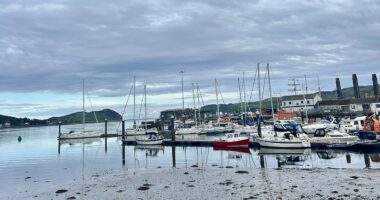NEW photos from hidden cameras gives the world its first ever glimpse of one of the last uncontacted Amazon tribes.
The group is so secretive that no-one knows its true name, though outsiders call it the Massaco.




The Massaco tribe, that lives in the dense jungle of Rondônia, western Brazil, is one of just 28 isolated groups confirmed in the country.
The tribespeople are completely self-sufficient, hunting for their food with long bows over three metres long.
It is a mystery to researchers and other indigenous people how the tribe shoots arrows from bows so long.
They also set traps to keep outsiders away – solid wooden spikes on the forest floor that can pierce tractor tyres.
The traps are being found more often and closer to the borders of civilisation, sending a clear message: “Keep out”.
The Massaco is distinguished from other tribes by their tall huts, heavy use of spikes, poles adorned with animal skulls, long hair, moustaches, and absence of piercings.
The new photos were snapped on secret cameras set up in the jungle by researchers from Brazil’s National Indigenous Peoples Foundation (Funai).
They were set by Funai’s Altair Algayer, who oversees the protection of the Massaco’s 1-million-acre territory.
Photographs captured in 2019 and 2024 indicate a growing population within the tribe, reflecting a positive trend observed in many isolated communities.
They were taken in an area where Funai often leave tools, intended to reduce the likelihood of the tribe visiting farms or logging camps.
Algayer has been committed to documenting the tribe and protecting its land since 1992.
It is vital that his team is able to prove the tribe still exists in order to allow Funai to continue its work.
Algayer estimates that in the early 90s there were 100-120 members of the tribe.
Now, he thinks there are around 50 families, each with four or five members, meaning the total is 200-250.
Tiny bows, toys and small footprints provide evidence of children and that the tribe is growing.
Algayer informed The Guardian, stating, “During our recent explorations and from satellite imagery, we have identified an increasing number of new tapiris [thatched huts], leading us to believe there may be up to 300 individuals.”
Since working in the region he has documented 174 huts, photographed thousands of artefacts and mapped the tribe’s seasonal movement.
His team uses knowledge of their movement patterns to arrive in an area soon after the tribe has left.
They have discovered that the Massaco burn down areas of grassland at the start of the rainy season and then move there when fresh plants are sprouting.


“By locating the hotspots recorded in satellite images in July and August, we know in advance […] where they will settle to spend the next rainy season, from December to April,” Algayer said.
Conditions for the Massaco have improved significantly since the 1980s when their land was invaded by loggers and plagued by development.
Back then, the government’s strategy was to make peaceful contact with the uncontacted tribes in an attempt to communicate.
The authorities attempted to lure tribespeople along paths with gifts, including tools, metal pots, utensils and mirrors.
However, in 1987 Funai stopped attempting contact as it spread disease and misery amongst the people.
They adopted a “no-contact” policy, and the Massaco area became an experiment in locating and monitoring tribes with zero interaction.
Before these images, only one Funai agent had ever seen the Massaco.
In 2014, Paulo Pereira da Silva, 64, was making coffee at around 2pm when he heard a knocking.
He said: “I went into the office and looked out the window, which has a protective screen, and I saw two people at the foot of the stairs.
“I froze.”
Naked and without arrows, the two men were placing spikes in front of the stairs.
“An older man was making holes with a stake made of aroeira wood and a young boy was arranging the spikes,” Pereira said.
When Pereira shouted at the pair, the older one stared at him and the younger one ran, leaving the spikes on the ground.


















